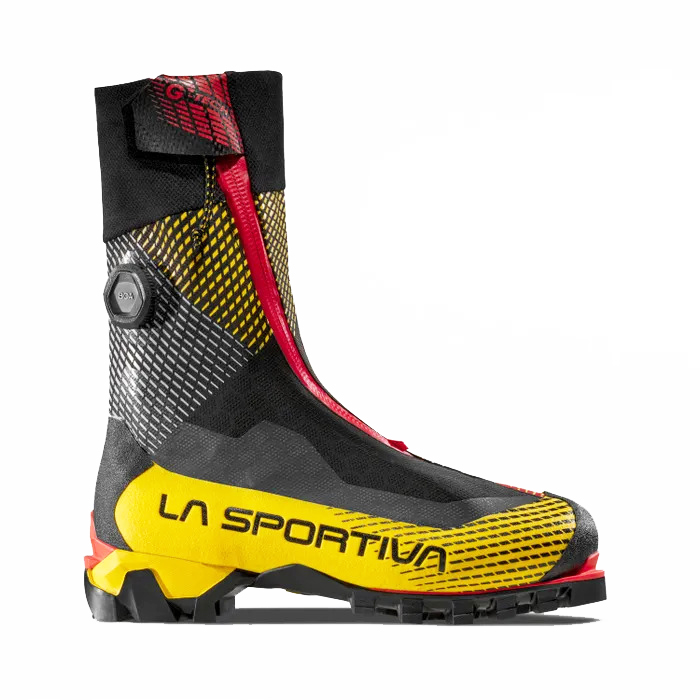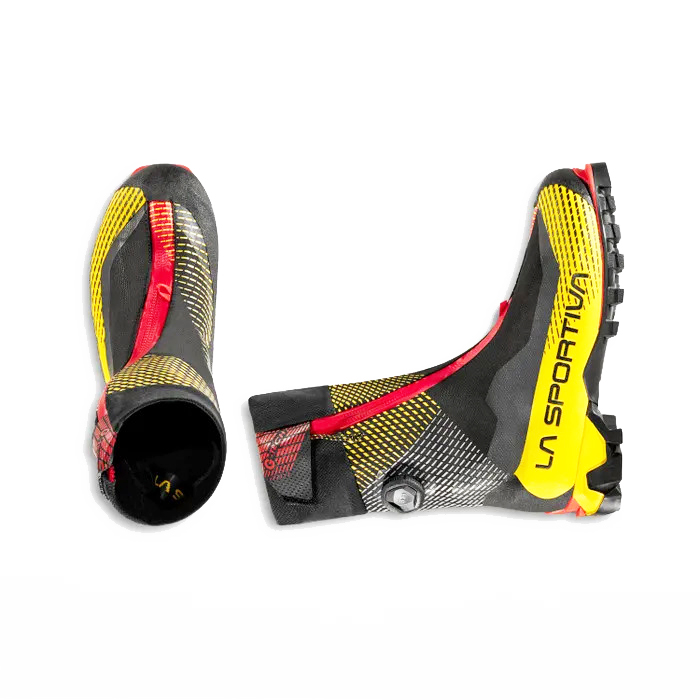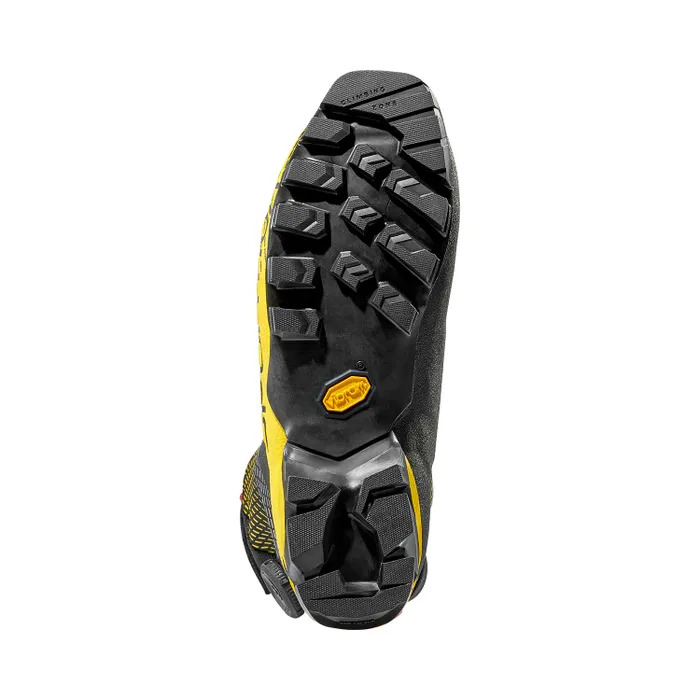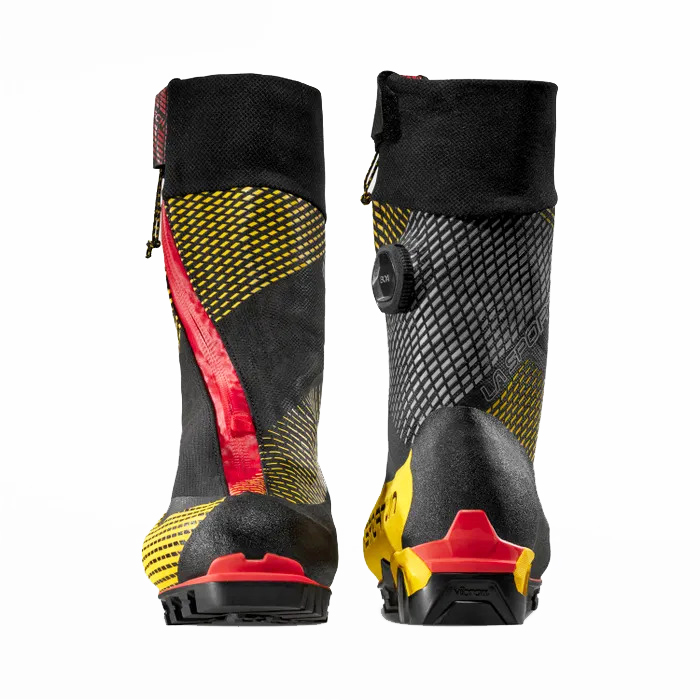A week of climbing bullet hard -20c Norwegian ice had left my big toe nails black and sorry looking. Apparently my feet had spread, and thus I was in the market for a new pair of winter boots for an upcoming trip. The G-Tech from La Sportiva looked great on paper, superlight, but would they be warm enough and climb well on ice?
As with any boot, fit is personal, as is temperature. I have an average foot shape, having owned various winter boots from Scarpa and La Sportiva previously; including La Sportiva Trangos, Nepals, Baturas, Spantiks; and more recently Scarpa Charmoz, Mont Blanc Pro, Rebel Pro and Rebel Ultras. Fortunately I also run fairly hot and wear lightweight boots often, rarely suffering from overly chilly feet.
Weight
First off, the La Sportiva G-Tech boots are incredibly light! La Sportiva have done an amazing job trimming fat, without seemingly compromising durability or warmth. The advertised weight is 630g in a size 42, on my scales they average 759g a boot in size 44.5. These weigh in less than the actual weights of the already lightweight Scarpa Rebel Pro and Ultras I’ve owned (821g/856g).
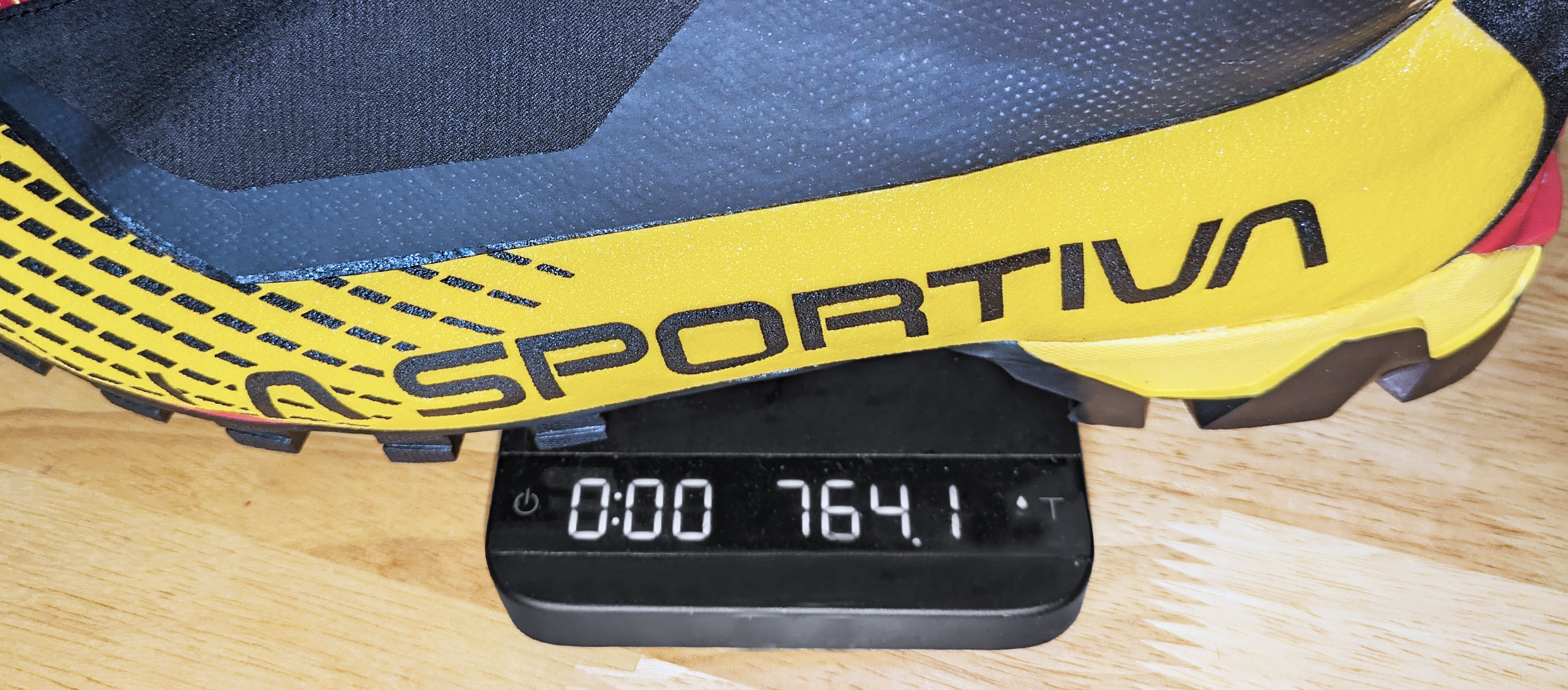
Durability
This is not a long term review of the G-Techs, with only 2 weeks climbing time in the boot and relatively short approaches, I can’t speak to their longevity. Instead I’ll comment based on my perception of build quality and design choices. They’ve been on the market for a year now and there don’t seem to be any concerning reports from users which bodes well.
The sole is a vibram unit, with a climbing zone up front, and good depth to the lugs, traction seems good underfoot. The rubber compound is soft and grippy on wet rock, long rocky Scottish approaches could be a concern for wear. The boots are resoleable though, either completely so, or just the front section. The front crampon bail lip has a reassuringly large surface area for crampon binding interface.
The rand feels very protective, with a plasticky finish which extends a little way up the gaiter in high wear areas. No puncture holes yet, which could be my great footwork ; ) or more likely their nimbleness. Stitching looks good throughout and the zips zip zippily.
The Boa lacing system’s reliability and field repairability is something to consider. In remote settings, it’s worth carrying a Boa repair kit, fixes are unlikely to be quick or easy. There are plenty of mountaineering boots now that utilise the Boa system so they’re hardly untested/unproved tech though.
Overall the G-Tech seemingly balances it’s weight savings without feeling flimsy.
Warmth
In terms of warmth, I felt the G-Techs were warmer than the previous lightweight boots I’d owned, and perhaps more so than traditional mountaineering boots I’ve owned such as the Nepals or Mont Blanc Pro. Whilst insulation is minimal in the G-Tech, there are a few factors which contribute to their increased warmth.
CruciaI to the perceived warmth is the Boa system, providing a comfortable, even hold across my mid-foot, without the pinch points which can occur overzealously tightening traditional lace-up boots. The Boa system provides quick, on-the-fly adjustment: dial in a relaxed fit on the walk-in, crank it down before climbing, then get instant release/relief at belays all at the touch of the wheel control. With the Boa on the exterior of the gaiter, adjustment was possible even with gloved hands and when covered by softshell trousers.
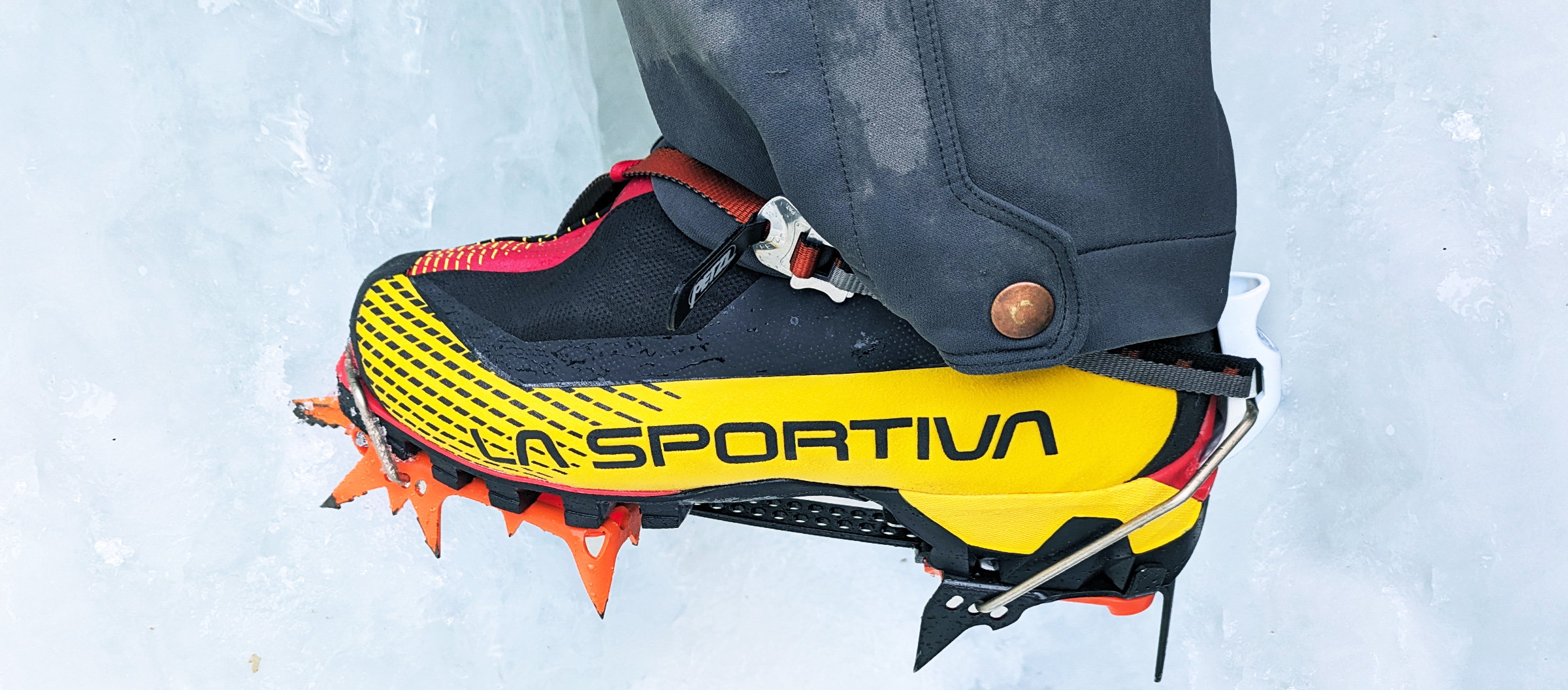
The excess volume in the boot allowed thicker socks, but the Boa clamped down around thinner socks when warmth wasn’t a priority, without compromising fit and hold. I expect they’d accommodate the added bulk of heated socks also which I’ve seen more climbers utilising.
Neither gaiter or boot have a waterproof membrane, but even on light rain days and warm ice I didn’t experience wet or cold feet, including an instructional day where I mostly stood still. For turbo Scottish ming, or inadvertant river dunks, it remains to be seen how well the G-Techs will handle moisture….
Fit
I have relatively low volume feet, with a skinny heel. Despite the slim external profile, the G-Techs feel voluminous inside and that they could accommodate a range of foot shapes well. The Boa eliminates excess volume without feeling crushing, holding my foot firmly whilst applying pressure evenly across the mid-foot. The toe box is generous with wiggle room aplenty for toes, even with the Boa cranked. The gaiter did appear a little baggy with the Boa lacing locked down on my low volume feet, but I never found this an issue with them catching crampon points.
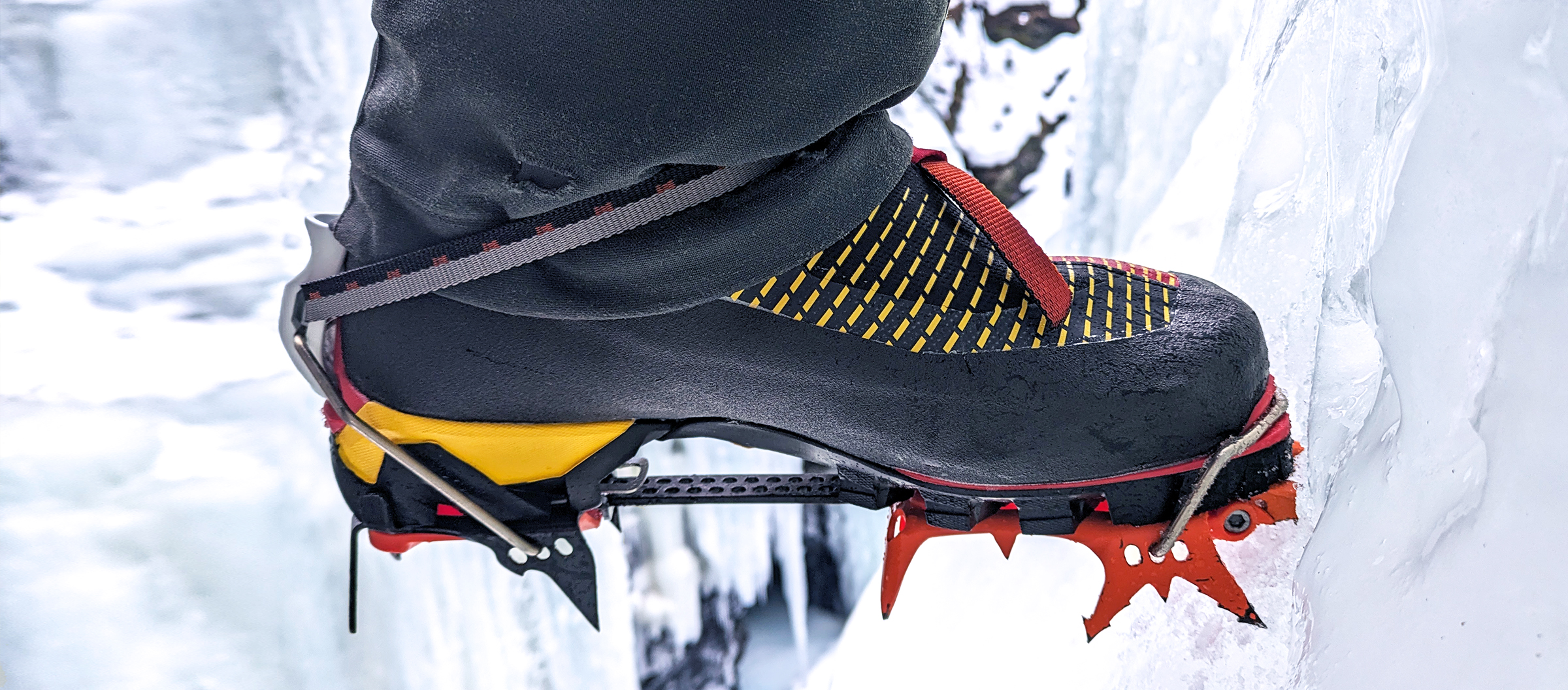
The G-Tech heel is reasonably skinny and moulded, reducing heel lift. The shin power strap allows a little fine tuning between shin and midfoot. I found I needed to have it cranked fairly tight to lock my heel down. For people with odd shaped feet, the Boa system may lack the adjustability lacing adaptations could afford for fine-tuning fit. Wide opening for easy entry with a large glove friendly pull at the rear and Boa dial is ergonomically placed for quick adjustments. The gaiter is relatively skinny around the calf, with thick socks I had just enough room but the material does stretch.
Crampon fit and compatibility with the Petzl Darts was excellent. The toe bail is generously sized and likely would provide a great platform for any modern asymmetric crampon.
Feel
The La Sportiva G-Tech climb exceptionally well. Light and precise, their svelte profile contributing to the feel, making it easier to see and place points accurately. The sole is stiff with a subtle flex, supportive whilst remaining flexible in the ankle. This does translate to less shin support than a traditional boot would provide on endless low angle front pointing, and I doubt the G-Techs would ski well but neither can I. I’ve only climbed ice with these so far, finding them great on delicate chandeliered ice and expect they would climb mixed equally well.
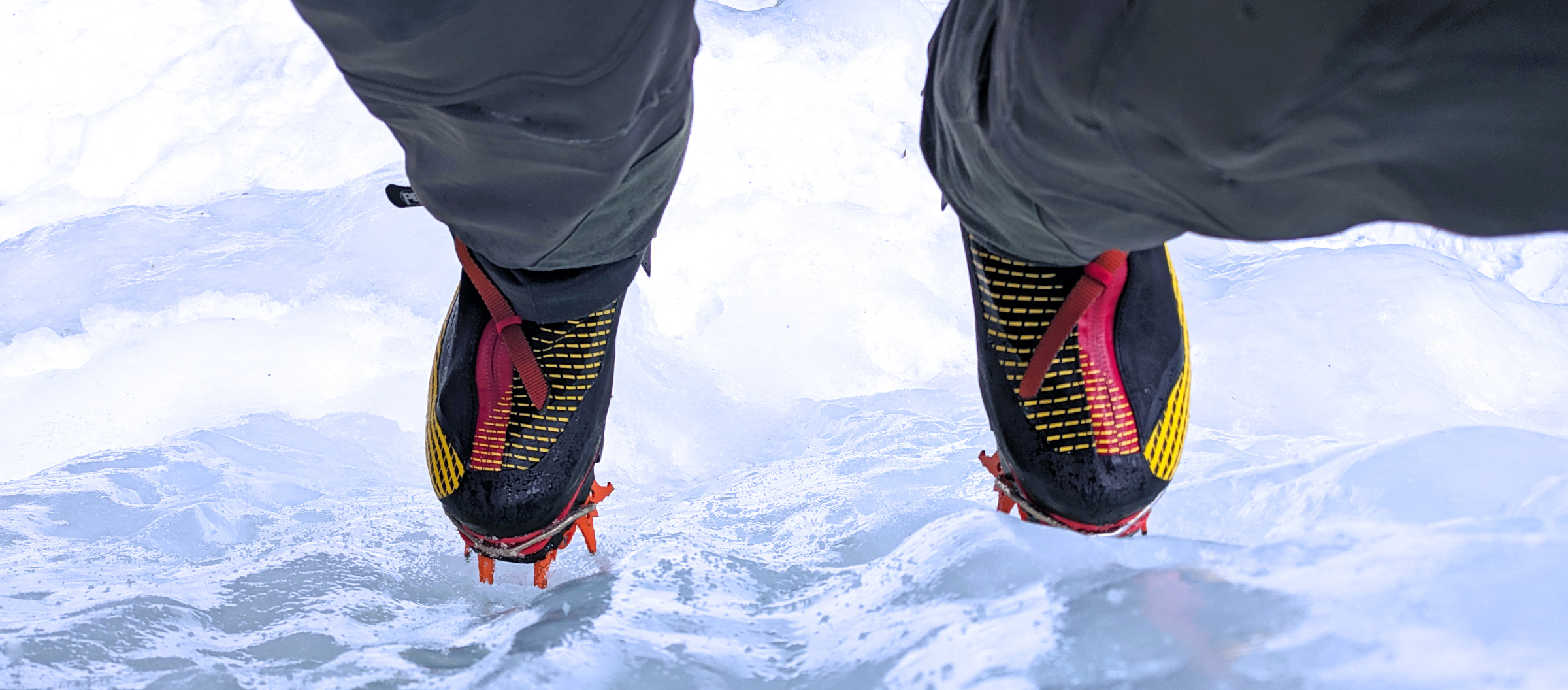
Walking is smooth despite their stiffness, with a well designed rocker that feels relatively natural, and a generous balance point when front pointing.
Cost
In the UK the RRP is £610, in Europe they retail at €682. There’s no getting away from the fact these are pricey boots. I was fortunate to purchase with a discount from a local retailer, but they were still eye wateringly expensive. The performance is, in my opinion, class leading and hopefully if they prove reasonably durable and last a couple resoles, the price is not wholly unreasonable.
Summary
A winter boot that climbs remarkably well; ultralight with exceptional warmth to weight.
Further Thoughts
Unfortunately in the UK it appears only the full EU (e.g 43, 42, 44 etc) sizes are being distributed and stocked in shops. I was fortunate to get a 44.5 half size which is bang on in terms of fit for me. These are exceptional boots and it’s a shame there isn’t the full size range available to British climbers seeking top end gear. I haven’t enquired as to why, could it be Brexit related? The gift that keeps on giving…. EDIT – V12 Outdoors are carrying the full size range and appear to be the only British retailer doing so (Dec 2024), so I would highly recommend a trip here. Living up to the reputation as the best climbing shop in the UK again, and less than 100m from our door!
It’s tricky for retailers to stock a wide range of expensive boots such as these across the size range, so it’s understandable, but bear in mind you may need to special order, or order online if you fall in between sizes. I would hope anyone purchasing boots such as these would appreciate the service affored by bricks & mortar retailers and start there.
I have been genuinely impressed with how the Boa system provides an even tension across the midfoot, and much like a skiboot I expect with some clever swapping of insoles and sock selection, volume could likely be tweaked to achieve a good fit even in a slightly too large boot. Again, this is where a specialist retailer will be able to support and fine-tune fit.
Other options
At the lighter, high performance end of the market for B3 winter climbing boots the main options currently in UK shops right now seem to be the La Sportiva G-Tech reviewed here, the Scarpa Phantom Tech HD and the North Face Summit Torre Egger Futurelight.
I looked very closely at the similarily priced Scarpa Phantom Tech HD boots, I get on well with Scarpa fit and have been impressed with their boot range in recent years. The stated weight of the boot is considerably heavier at 800g a boot (size 42) but they benefit from a waterproof gaiter and more insulation. Warmth of the G-Tech was a concern of mine when purchasing but I’ve been pleasantly surprised by their warmth and glad of the light weight. Having tried on the Phantom Tech HD, I found it’s sole to have noticeably more flex than the G-Tech. Likely great for sensitivity on mixed ground but less supportive on pure ice. The lace system on the Phantoms worked great to dial in a good fit, but I am now a convert to the convenience of the Boa.
I also looked closely at The North Face Summit Torre Egger Futurelight, which whilst being a bit of mouthful, look like a serious (and funky) contender from TNF to the above. Similarily priced again, though better deals to be found in the sales. Their stated weight of 682g puts them much closer to the G-Tech’s 630g. Potentially they could be warmer given their double boot construction, the 2 liner options looking very interesting. The gaiter appears to be cut a little lower than the G-Tech giving less protection though, the Boa system positioned under the gaiter potentially trickier to adjust on the fly and they appeared to be less supportive, from looking at the positioning of the power strap.
For those who suffer with cold feet, the La Sportiva G-Summit boots look similarily high performance, with the added benefit of greater warmth in the form of a light double boot contruction. At 50g heavier than the Phantom Tech HDs, and the promise of high alititude performance warmth, and adaptability to temps, these look like another great boot from La Sportiva that I’ll be looking at closely for trips at altitude, when the credit card is finally paid off from the G-Techs…
